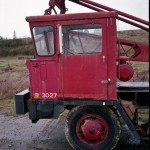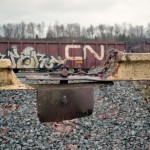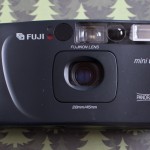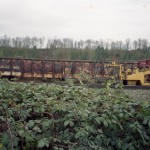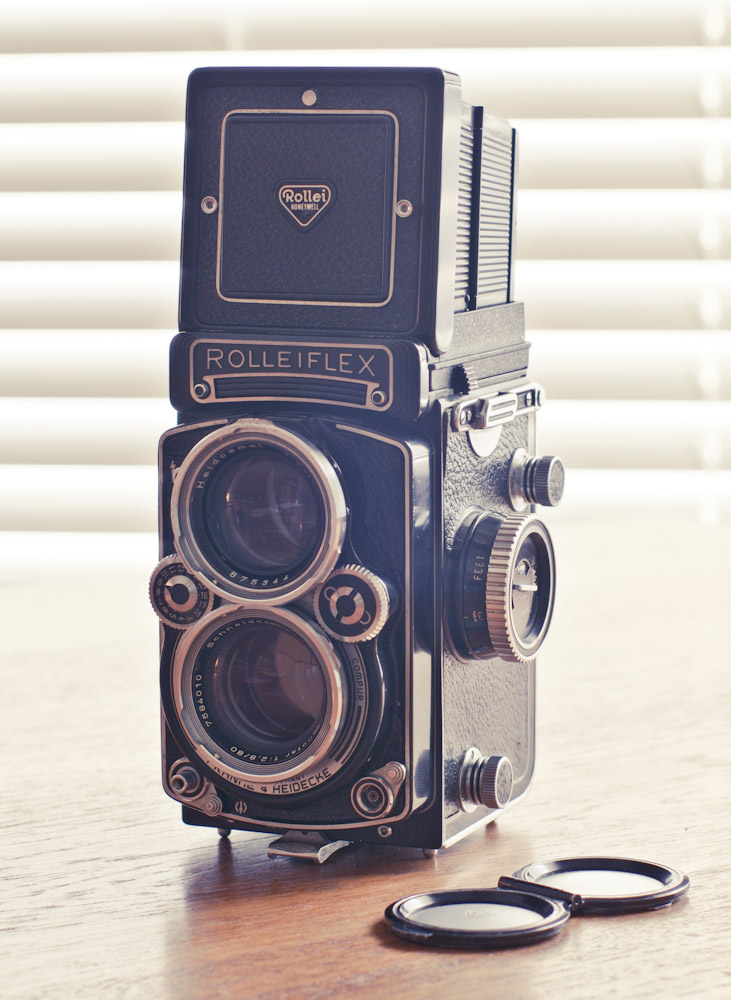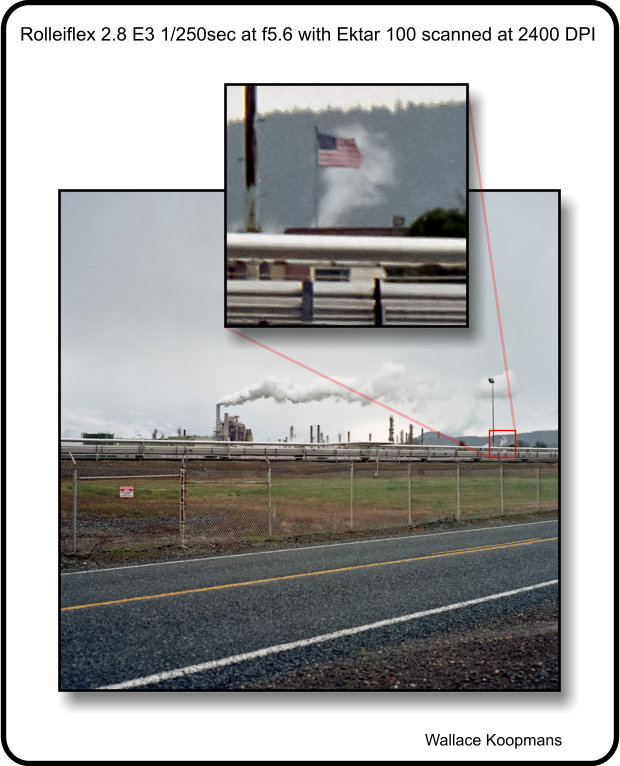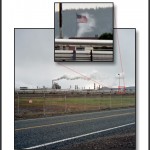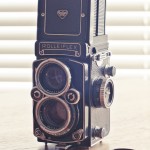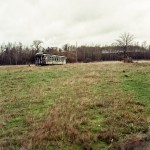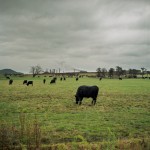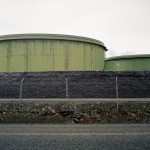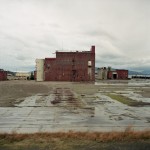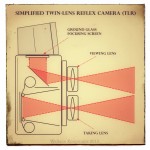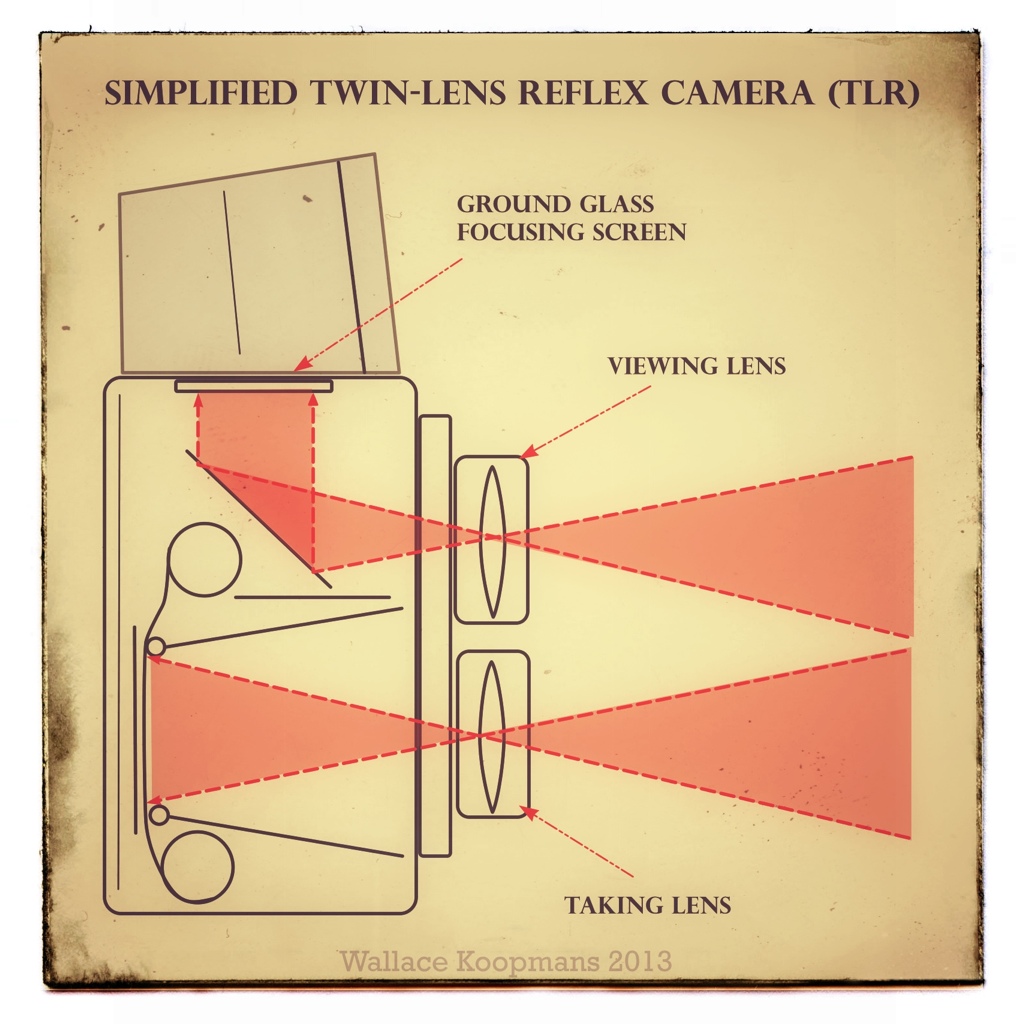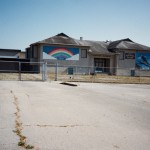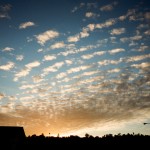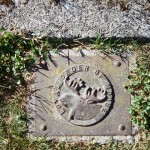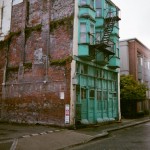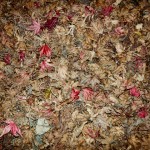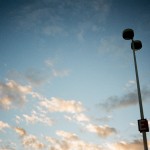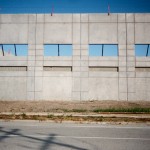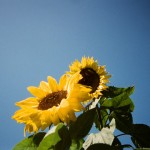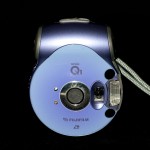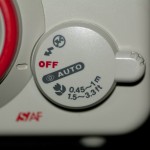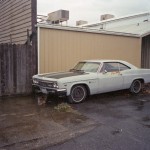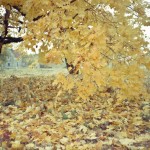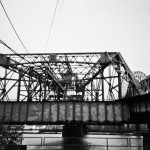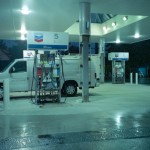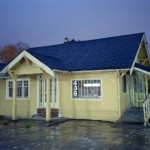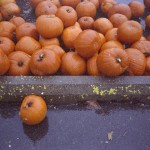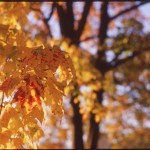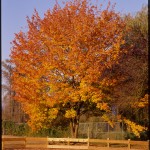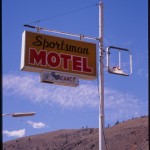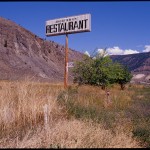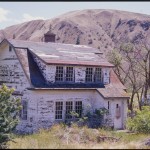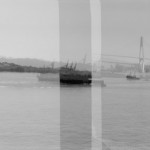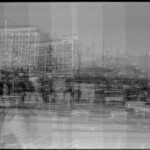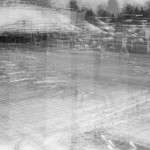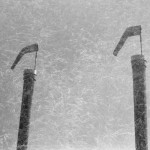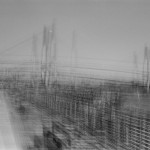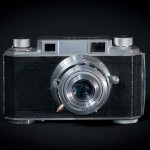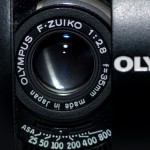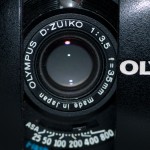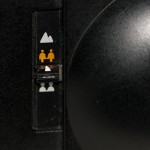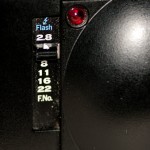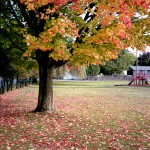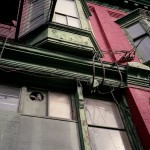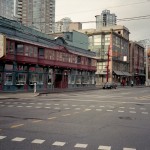Fuji DL500
Previously on the Fuji DL500 Files: Our hero was uncertain of the quality from this optical oddity. In this episode it becomes much clearer that the lens performs best at 45mm despite the flare it causes and that the 28mm setting is a poor performer. As the 45mm focal length is achieved by swinging an additional optical group into the light path it is apparent that the central area of the lens is fine, it is the outer corners at which the wide setting fails. After only two episodes the Fuji DL500 files are cancelled.
I’m not quite sure how but according to the Technical Image Press Association it won the award for best 35mm compact camera in 1991, perhaps they never actually took any pictures with it.
Yashica T AF
I had hoped for better results from the Yashica T AF with its 35mm Carl Zeiss T* optics but I was unfortunately let down by the focus system. My copy no longer focuses to infinity. The reason for my optimism came from several factors beyond the lens; It has a manual ASA setting that can by easily used as a rudimentary exposure compensation system, it only fires the flash when you activate it rather than defaulting to on like so many other point and shoot cameras including the fantastic Yashica T3. Aesthetically I like the camera too for its angular glossy plastic and smoked glass lens cover that swings away to reveal the lens for each exposure, this all seems like it could only have sprung from the early 1980’s.
Back to my copy of this camera, only where I pointed the camera at nearby objects did it achieve correct focus, so all the shots into the distance are out of focus. Oh well I will mark the camera with a tag of shame and put it into the parts bin.
Rolleiflex 2.8 E3
The first Rolleiflex was produced in 1928 with a 75mm f4.5 Zeiss Tessar lens according to “Rollei Photography c1952” by Jacob Deschin. My version however is a 2.8 E3 that was likely produced between 1962 and 1965. My E3 has the Schneider Kreuznach Xenotar 1:2.8/80 taking lens. When handled correctly, as in supported stably and exposed well, the images produced have an amazing amount of detail and depth to them.
;
Most of these pictures were taken under pretty adverse conditions with high winds and pelting rain forcing me to use a golf umbrella that was eventually turned inside out by a gust. Never the less the camera did not let me down.
;
;
;
A TLR (twin-lens reflex) is in essence two camera together one for viewing the image and one for taking the picture. The image from the viewing lens is formed on the ground glass after bouncing off the internal fixed mirror. This results in an image that is right side up but reversed from left to right. This takes some getting used to because turning the camera one way or the other has the opposite effect on the screen. Because the mirror is fixed, unlike an SLR, there is negligible camera shake as the leaf shutter is tripped. The captured image is recorded on 120 film as 6cm by 6cm, this square format also takes some getting used to for composition but is a nice break from the traditional rectangular formats of most other cameras. Every aspect of this camera exudes quality it is the standard by which I judge other cameras.
Fujifilm Nexia Q1

Not to be confused with my new Pentax Q or the fictional character on Star Trek the next generation. In the heyday of APS film (insert laugh track here) Fuji released this made in China camera with its 22mm lens that looks more glass bead like than lens like. The striking thing about this camera is its non camera shape, it’s very round. Surprisingly that is what is so appealing about it though, worn around your neck it hangs neatly like a giant medallion and nothing says you are a winner like a purple camera medallion. It did come in other colours but those clearly were not for winners.
No controls no over-rides no problem, take pictures have fun.
Canon WP1

What can I say, I like shooting in the rain or at least not worrying that my camera gear will be damaged by it. I’ve seen pictures taken with this camera completely submerged but Canon did not actually claim that this was an underwater camera despite the obviously robust sealing. In fact the WP stands for water proof which is what you expect when you’re talking about a jacket not something to be dunked. The manual even states “This camera is designed to be water proof and can be used in the rain or splashed with water with no ill effects. However this is not an underwater camera.” So user beware.  I really like the control dial although I’m not sure why the subject needs to see it instead of the photographer. I do suspect it is a necessary engineering decision considering that you need to open the back to put film in. With the dial you can turn the camera on and disable the flash in one operation which is a bonus as I rarely want to use the flash built into these compact cameras. It is also a very quiet camera in all it’s operations which only slightly counteracts its garish appearance.
I really like the control dial although I’m not sure why the subject needs to see it instead of the photographer. I do suspect it is a necessary engineering decision considering that you need to open the back to put film in. With the dial you can turn the camera on and disable the flash in one operation which is a bonus as I rarely want to use the flash built into these compact cameras. It is also a very quiet camera in all it’s operations which only slightly counteracts its garish appearance.
My previous thoughts on this camera “Fred Herzog and the Canon WP-1“
Slide Size Scrutiny or Chrome Comparison
There is always talk on the Internet about camera sensor size so I thought it would be fun to illustrate different film sizes, and those little 110 slides are just so cute.
The Papa Bear chrome is from a 120 film in a medium format camera and is (56mm x 56mm or 3156 square mm )
The Goldylocks slide is from 35mm film (24mm x 36mm or 864 square mm)
The little baby slide is from 110 and is (13mm x 17mm or 221 square mm) This is very close to the size of 4/3″ sensors which are 13.5mm x 18mm
Kodak E100VS Slide Film
As much as I’ve always loved shooting slides the extra costs involved have limited my use of it. The choice will soon be even easier as the slide film available dwindles. Kodak of course has exited that business and Fuji has a limited selection. So almost every time I shoot using positive film in the back of my mind is that this may be the final time. In this case I shot Kodak E100Vs positive film. VS stands for vivid saturation so as you might expect the colours are vivid and saturated (That really was the best I could come up with) I had the film in my Pentax PZ1p for several months so there is a variety of scenery amongst the images. Despite the roll being 36 frames the shots are limited in number as my more personal ones are not included, but I am as pleased with those as well.
Multiexposure and multiclick with the Konica 35
I’ve used the Konica I for this previously because of it’s completely separate shutter and film advance as well as the way that the film advance moves in little click steps. Because the image is formed upside down and backwards on the film you need to pan from left to right to make a stitch where the image sides line up. I made no effort to actually align the images but allowed them to overlap and even did a few multiple exposures where I didn’t advance the film at all. I wouldn’t say I think the results were great but an interesting beginning. One of the limits of photography is the concept of a single image representing a moment of time. This is a break from that boundary and I believe is worthy of further exploration.
Olympus XA2

The XA2 (shown on the right) is a wonderful little camera that looks much like the XA. There are key differences though, beginning with the lenses. The XA has a 35mm F. Zuiko lens that has 6 elements and a maximum aperture of 2.8 while the XA2 has the D. Zuiko with 4 elements and a maximum aperture of 3.5. 
 Another major difference is that the XA uses rangefinder focusing instead of the simple zone focus system of the XA2 and the final difference being that the XA is aperture priority with the shutter speed shown via a needle in the viewfinder and the XA2 is completely automatic with no feedback.
Another major difference is that the XA uses rangefinder focusing instead of the simple zone focus system of the XA2 and the final difference being that the XA is aperture priority with the shutter speed shown via a needle in the viewfinder and the XA2 is completely automatic with no feedback. 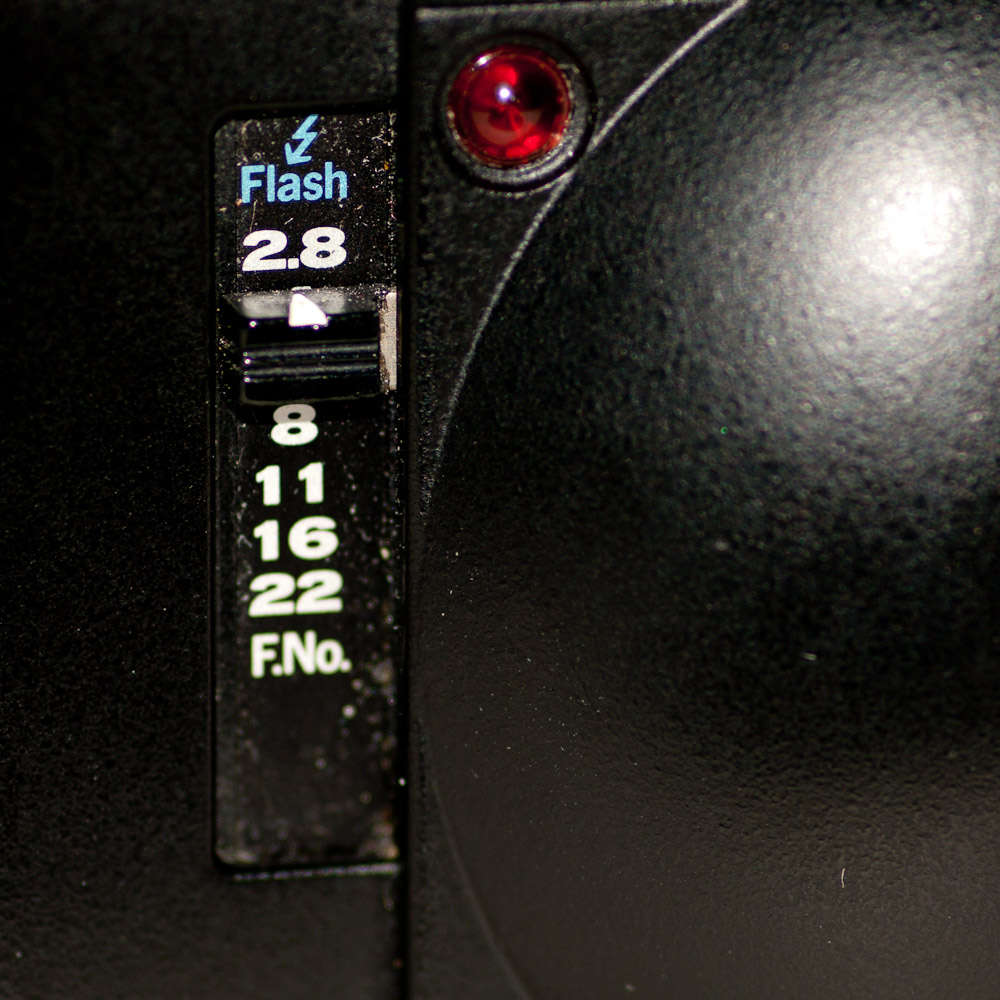
 So obviously the XA has many advantages that provide for greater photographic control. That isn’t the end of it though because using the XA2 is a great shooting experience. Giving up some control you gain back in speed of operation and can turn more attention towards the image you intend to make.
So obviously the XA has many advantages that provide for greater photographic control. That isn’t the end of it though because using the XA2 is a great shooting experience. Giving up some control you gain back in speed of operation and can turn more attention towards the image you intend to make.






